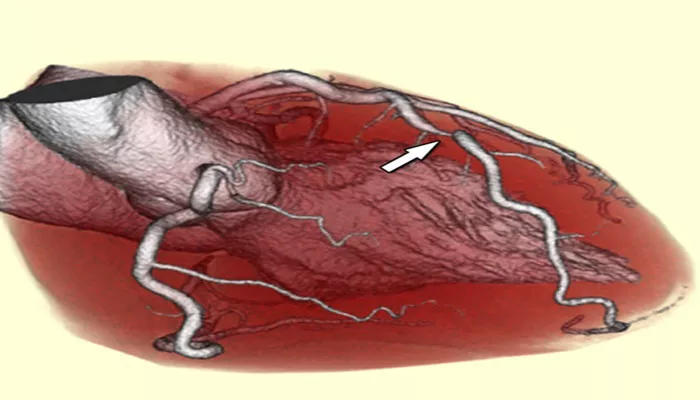Coronary artery disease (CAD) is a condition in which the arteries that supply blood to the heart muscle become hardened and narrowed. This occurs due to the buildup of cholesterol and other substances, known as plaque, on the artery walls. Over time, this reduces blood flow to the heart and can lead to chest pain, heart attacks, and even death.
Why Reducing Risk Is Important
Reducing the risk of CAD is essential to prevent life-threatening cardiac events. CAD is one of the leading causes of death globally. Preventive strategies can greatly reduce the incidence and severity of this disease.
Major Risk Factors for Coronary Artery Disease
Non-Modifiable Risk Factors
These include age, gender, and genetics. Older age, being male, and a family history of heart disease increase the risk of CAD. Although these cannot be changed, awareness helps guide preventive strategies.
Modifiable Risk Factors
These are lifestyle-related and can be improved or controlled. They include high blood pressure, high cholesterol, diabetes, smoking, obesity, sedentary lifestyle, and poor diet.
How to Reduce Risk of Coronary Artery Disease?
Diet and Nutrition
Eat More Fruits and Vegetables
Consume a variety of fresh fruits and vegetables daily. They are rich in vitamins, minerals, fiber, and antioxidants. These nutrients help reduce inflammation and support heart health.
Reduce Saturated Fats and Trans Fats
Limit foods high in saturated fats such as red meat, butter, and full-fat dairy products. Avoid trans fats found in processed foods and baked goods. Choose healthier fats like those in olive oil, avocados, and nuts.
Limit Sodium Intake
Too much sodium can increase blood pressure. Reduce salt intake by avoiding processed and canned foods. Flavor meals with herbs and spices instead of salt.
Increase Fiber Intake
Fiber helps lower cholesterol levels. Include whole grains, legumes, fruits, and vegetables in your meals. Aim for at least 25 to 30 grams of fiber per day.
Exercise and Physical Activity
Benefits of Regular Exercise
Physical activity strengthens the heart muscle, improves blood flow, and helps control weight, blood pressure, and cholesterol levels. It also reduces stress.
Recommended Exercise Routine
Engage in at least 150 minutes of moderate aerobic activity or 75 minutes of vigorous activity each week. Include strength training exercises at least twice a week.
Weight Management
Maintain a Healthy Body Weight
Obesity increases the risk of CAD by contributing to high blood pressure, high cholesterol, and insulin resistance. Aim for a body mass index (BMI) between 18.5 and 24.9.
Strategies for Healthy Weight Loss
Combine regular exercise with a balanced diet. Avoid crash diets. Set realistic goals and monitor your progress. Seek guidance from a healthcare provider or nutritionist if needed.
Control of Blood Pressure
Monitor Blood Pressure Regularly
High blood pressure damages artery walls and accelerates plaque buildup. Keep track of your blood pressure at home or with regular checkups.
Lifestyle Changes to Lower Blood Pressure
Reduce salt intake, exercise regularly, limit alcohol, and manage stress. If necessary, your doctor may prescribe medication to keep your blood pressure in a healthy range.
Managing Cholesterol Levels
Understand the Types of Cholesterol
LDL (bad cholesterol) contributes to plaque buildup, while HDL (good cholesterol) helps remove it. Keep LDL low and HDL high for better heart health.
Ways to Lower LDL and Raise HDL
Eat a heart-healthy diet, exercise regularly, and avoid tobacco smoke. Medications like statins may be prescribed to lower LDL if lifestyle changes are not enough.
Blood Sugar Control
Monitor Glucose Levels
Diabetes significantly increases the risk of CAD. Monitor blood sugar levels and follow treatment plans. Poor glucose control damages blood vessels and accelerates atherosclerosis.
Diet and Lifestyle for Glucose Control
Choose low-glycemic index foods, maintain a healthy weight, and exercise regularly. Medication may be needed to keep glucose levels within target range.
Quit Smoking
Smoking and Heart Disease
Smoking damages the lining of arteries, raises blood pressure, and reduces oxygen in the blood. It increases the likelihood of blood clots and plaque formation.
Tips to Quit Smoking
Set a quit date, use nicotine replacement therapies, seek support from friends, family, or a counselor, and avoid triggers. Quitting smoking lowers the risk of CAD quickly and significantly.
Limit Alcohol Intake
Alcohol and Heart Health
Excessive alcohol consumption can raise blood pressure and triglyceride levels. It may also contribute to weight gain and irregular heart rhythms.
Safe Drinking Guidelines
Limit alcohol to one drink per day for women and two for men. Avoid binge drinking. If you do not drink, there is no need to start for heart health benefits.
Stress Management
Effects of Stress on the Heart
Chronic stress may increase blood pressure and lead to unhealthy coping behaviors like overeating, smoking, or alcohol use. It may also trigger inflammation.
Ways to Manage Stress
Practice relaxation techniques like deep breathing, meditation, yoga, or tai chi. Regular exercise, adequate sleep, and social connections also help reduce stress.
Sleep and Heart Health
Importance of Quality Sleep
Sleep deprivation can increase the risk of high blood pressure, obesity, and diabetes. These are all risk factors for CAD. Adults should aim for 7–9 hours of sleep per night.
Improving Sleep Hygiene
Stick to a consistent sleep schedule, avoid screens before bed, and create a comfortable sleep environment. Limit caffeine and heavy meals before bedtime.
Regular Health Screenings
Importance of Routine Checkups
Regular screenings for blood pressure, cholesterol, and glucose can detect problems early. Early intervention reduces the risk of complications.
Follow Medical Advice
Take prescribed medications, follow dietary recommendations, and report new symptoms. Work with your doctor to monitor and adjust your treatment plan.
Conclusion
Coronary artery disease can be prevented or delayed through proactive lifestyle changes and medical management. Focus on diet, exercise, weight control, and regular health monitoring. Quit smoking, manage stress, and sleep well. Reducing your risk today can lead to a healthier future.
Related topics:


